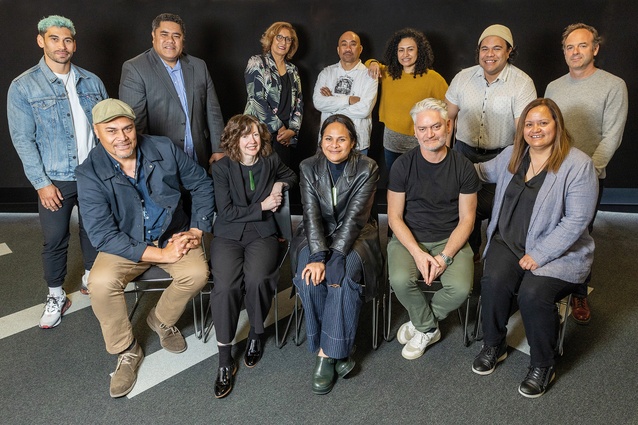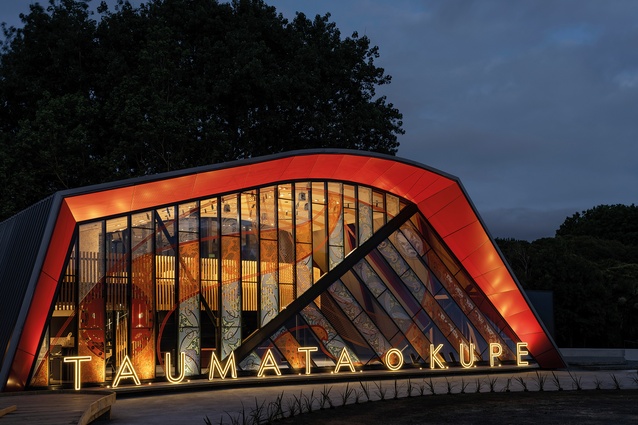Te taura whakairo: the continuing tradition
Toitū te whenua, toitū te tikanga, ka ora ngā toi. When we hold fast to our land and values, our arts and architecture flourish.
It is a great and unexpected honour to receive the Te Kāhui Whaihanga New Zealand Institute of Architects Gold Medal. It places me within a whakapapa of architects whom I have always greatly admired and provides a platform from which to communicate architecture’s importance. It also prompts one to reflect on one’s own contribution to architecture. The kaupapa of this essay is to discuss my work as a journey through architecture.
I only ever wanted to be an architect when I was growing up, which was an unusual ambition for a Ngāpuhi/Ngāti Kahu girl from West Auckland. My timing was appalling. I entered the University of Auckland School of Architecture in 1989, 18 months after the stock market crash, with little prospect of finding employment as an architect after graduation. But, by then, I had found something that would influence the rest of my career: Māori architecture. I stayed at the School, completing a post-professional master’s thesis under Sarah Treadwell’s supervision and a PhD with Mike Linzey and Mike Austin. My doctoral thesis argued that Māori buildings and their designers have a whakapapa: a lineage of concepts, practices and values passed between generations of makers who adapt them to suit the uniquely Māori needs of the communities they serve. To demonstrate this, I examined a century of building that Bill McKay had called ‘Mōrehu’ (Survivor), which began with kīngitanga pātaka (raised storehouses) in the 1850s and ended with the construction of Rātana churches.
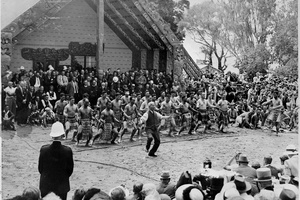
In between were: Pai Mārire movement niu poles and flags; Ringatū Church wharenui (meeting houses); Māori parliaments; the kāinga of Parihaka, Maungapōhatu and Tūrangawaewae; and the wharenui and wharekai of the School of Māori Arts and Crafts. I cut my teeth on library and archival research for this project, at a time when there were no digital resources or catalogues, and interviewed kaumātua, learning the most important values for anyone working in Indigenous architecture: listening.
Around 300 Mōrehu structures were discussed in the thesis. They were the social, political, spiritual and architectural infrastructure for tino rangatiratanga (Māori self-determination) before, during and after the New Zealand Wars. Before colonisation, Māori society was primarily organised as hapū (subtribes) and had distinct regional artistic and architectural practices. Through their resistance to colonisation and steadfast determination to hold on to their lands, Māori sought the amalgamation of hapū and iwi into the pan-tribal and national groups mentioned above. These buildings were sometimes created with European tools, materials and forms, yet their use was resolutely and autonomously Māori.
The research also identified a pivot point in Māori architecture and art that occurred just before World War Two. There were two very different styles led by protagonists who were clearly at odds with one another politically, socially and spiritually. The first were the innovative Romanesque churches and Spanish Mission-style community buildings built by Tahupōtiki Wiremu Rātana and his eponymous church and political party; the second was the whare whakairo (decorated meeting houses) revival of the Tūrangawaewae Carving School, established by Te Puea Hērangi, and the School of Māori Arts and Crafts, founded by Āpirana Ngata. Although both styles spread rapidly across the North Island, only the whare whakairo style has continued to be built. This is because of the inter-generational knowledge transfer perpetuated by Te Puea and Ngata’s schools, something which was not part of the Rātana movement.
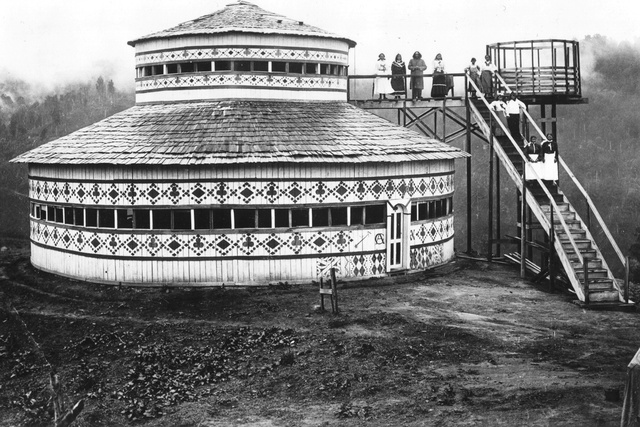
Two findings emerged from the thesis: first, how important teaching and learning is to making a real difference in architecture. The second was how influential the 19th century was on the social, political, built and natural environments of this country. The New Zealand Wars had a devastating effect, extending far beyond the conflict zones; this will take a long time to repair. Before that time, whānau and hapū were self-sufficient and had tikanga-based economies that sometimes involved trade with non-Māori; these are the sort of engagement and systems that enable architecture to thrive. Initiatives like the teaching of Aotearoa New Zealand history in schools will make visible histories that too many generations of New Zealanders have been conditioned to regard as ‘the past’, and inspire our rangatahi to find pathways for a better future.
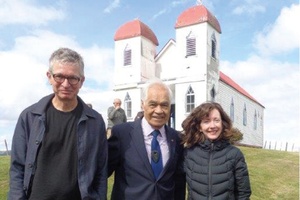
The Mōrehu period was followed by the emergence of contemporary practice and preceded by several centuries of Māori architecture that itself continued a tradition of building in Oceania measured in millennia. A lecturing appointment to the University of Canterbury School of Fine Arts between 1998 and 2003 offered the opportunity to teach Māori art and architectural history, and research the customary and contemporary periods of these related practices. While in Christchurch, I joined the southern branch of Ngā Puna Waihanga (the Māori Artists and Writers Association) and learned raranga, tāniko and muka (harakeke/New Zealand flax fibre) extraction in weaving wānanga run by Cath Brown (Ngāi Tahu; no relation).
It was an exciting time to be in Christchurch and working with excellent academic mentors. Hundreds of graduates, informed about Māori art and architecture, emerged as well as three books and four curated group exhibitions in public galleries: Tai Tokerau Whakairo Rākau: Northland Māori Wood Carving (2003), a history and catalogue of taonga from the region, now in public collections; Māori Arts of the Gods and Introducing Māori Art (both 2005), two different ways of understanding Māori art and architecture, illustrated with photographs from the Brian Brake collection; and Hiko! New Energies in Māori Art (Robert McDougall Art Gallery, 1999), Techno Maori: Māori Art in the Digital Age (City Gallery Wellington and Pātaka, Porirua, 2001), Whare (SoFA Gallery, 2002) and LightSCAPE (multiple Christchurch venues, 2004). Exhibitions provided an unconstrained opportunity to explore what Māori spaces could be. Looking back at them now, these shows were about the decolonisation and re-indigenisation of space through the creation of new artefacts, digital media, sound and, most importantly of all, tikanga Māori.
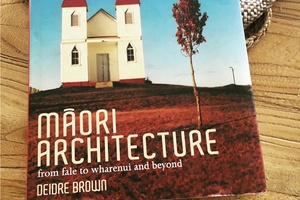
At the end of 2003, I returned to the University of Auckland for a senior lectureship at the School of Architecture and Planning. The School had changed considerably and positively under the leadership of Errol Haarhoff and stewardship of the permanent and sessional staff. It was more focused on teaching and research excellence and the studios had been renovated and digitised to resemble contemporary practice environments. Here, I broadened my teaching platform to include New Zealand and Pacific architecture, and increased my production of articles and chapters on customary and contemporary Māori architecture, culminating in the book, Māori Architecture: from Fale to Wharenui and Beyond (2009).
When comparing Māori architecture to other Māori visual arts in Aotearoa New Zealand, it becomes abundantly clear that the former has not enjoyed the same profile as has the latter in terms of participation, understanding, education and visibility over the past 50 years. This is a result of Māori urbanisation (and the weakening or loss of connections to marae), the enduring social and economic legacies of colonisation, land alienation and the ‘professionalisation’ of the building industry (which reduced the design contribution of tohunga), all of which are well-known factors.
Yet, emerging during the same period was a strong Māori contemporary art movement, which is widely regarded as having its roots in the establishment of the Department of Education’s Māori Arts Advisory Service after the Second World War. The service’s advisors embedded a Māori arts-based curriculum in schools, which included drawing, painting, sculpture, ceramics and performance but did not extend to space-making. The advisors themselves became the founders of Māori modernism: Cath Brown, John Bevan Ford, Ralph Hotere, Fred Graham, Paratene Matchitt, Katarina Mataira, Cliff Whiting and Arnold Wilson, to name a few. While many of these artists contributed to buildings through their community co-designed murals and sculptures, they did not design buildings.
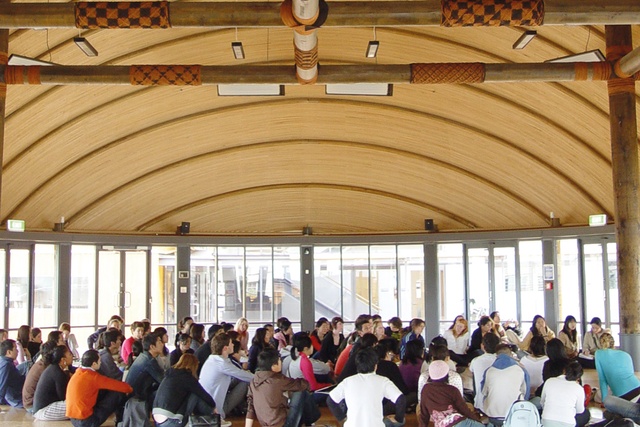
High entrance criteria to enter architecture training programmes, compared to those for visual and performing arts, has effectively locked Māori out of participating in the profession. A reduced visibility of contemporary Māori architecture (defined here as architecture designed by and/or with Māori) outside of marae contexts can be attributed to low numbers of Māori architectural designers. Only through educating practitioners and the public will the understanding and visibility of Māori architecture increase.
The agitation for this to happen has existed from at least 1957, when the educator, anthropologist and broadcaster Maharaia Winiata wrote in the journal, Te Ao Hou, “Perhaps the best place for the advanced study of Māori arts and crafts is in the suggested school of design projected for Auckland. One can visualise students, both Māori and Pākehā, making an intensive study of Māori art and working out ways and means of assisting in the construction of contemporary types of carved meeting house as well as suggesting adaptations of the art for use in private and public buildings. Probably slowness in the integration of Māori art into New Zealand cultural life is due as much to the absence of a body of Māori specialists organised for propaganda purposes, as to anything else.”1 In my lifetime, Te Whaihanga and Ngā Aho have attempted to fill the absence Winiata identified.
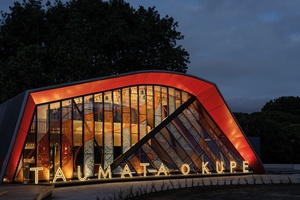
The roadblocks mentioned earlier have not inhibited the development of a contemporary Māori architecture, which has found expression in a small but growing number of commissions. The contributions of John Scott (Ngāti Kahungunu) and Rewi Thompson (Ngāti Porou, Ngāti Raukawa) have been the subjects of books. Wiremu (Bill) Royal (Ngāti Raukawa) is a less-talked-about figure, at least outside of the South Island, whose Māori modernist architecture urgently needs to be documented.
Tere Insley was the first Māori woman registered architect who forged a path for others to follow. DesignTRIBE, directed by Rau Hoskins (Ngāti Hau, Ngāpuhi), Chris Sage and Maurits Kelderman, celebrates its 30th anniversary this year as a tikanga-led practice collaborating with communities, and public and private clients. Anyone visiting TOA Architects’ (directed by Nicholas Dalton, Te Arawa, Ngāi Tūhoe, Tūwharetoa) Taumata o Kupe (2022) building at Te Mahurehure Marae in Auckland would leave feeling that Māori contemporary architecture is at the cutting edge of both toi Māori (Māori cultural expression) and contemporary architectural design. Matakohe Architecture + Urbanism, founded by Jade Kake (Ngāpuhi, Te Whakatōhea, Te Arawa) in Whangārei, demonstrates that the centres of Māori architecture are not necessarily located in cities, but in regions where there are strong mana whenua communities.
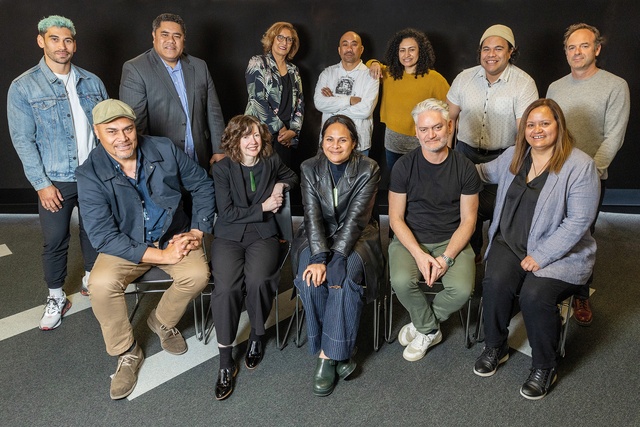
Soon after I finished my term as Head of the School of Architecture and Planning in 2021, I established the MĀPIHI: Māori and Pacific Research Centre with 20 other Māori and Pacific academics at my university. Its purpose is to deliver research to support Māori and Pacific whānau to live in healthy, sustainable and affordable homes. We have started our centre by co-creating research with hapū, iwi, communities, NGOs, local and central government agencies, practices and other research entities. Our objectives are ambitious: to create the knowledge, design and construction techniques, workforce and policy advice needed for transformational change in housing quality and supply.
As a university-level research centre, we have grown a PhD cohort of more than a dozen mainly architecture and engineering candidates, many of whom are of Māori and Pacific descent, to be the next generation of designers, academics and change-makers. They talk about postgraduate programmes offering them freedoms not possible in practice and future careers in an expanded field that combines teaching, research and practice. The research questions that they are exploring are different from anything that has been done before and speak to a continuing tradition of architecture that is ever evolving and unfolding for the benefit of communities and the profession of architecture. It is a privilege being part of their journey and those of the hundreds (if not over a thousand) of other students I have taught. I continue to seek new ways that I can contribute to the architecture of our country and the well-being of its people.

Dr Deidre Brown (Ngāpuhi, Ngāti Kahu) is a Professor of Architecture at Te Pare School of Architecture and Planning, Waipapa Taumata Rau University of Auckland. She teaches, supervises and researches Māori architectural and art history, and Māori and Pacific housing.
References
1. Papers Past, Magazines and Journals, Te Ao Hou, August 1957, ‘The Future of Maori Arts and Crafts’ (natlib.govt.nz).


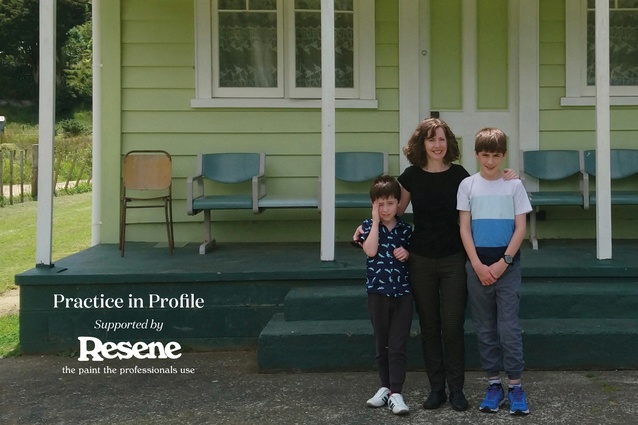
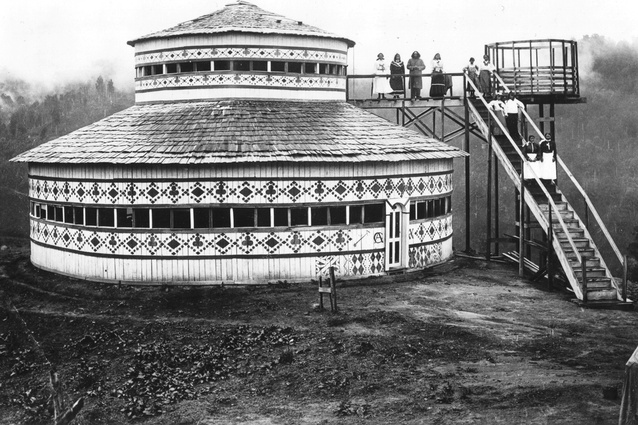
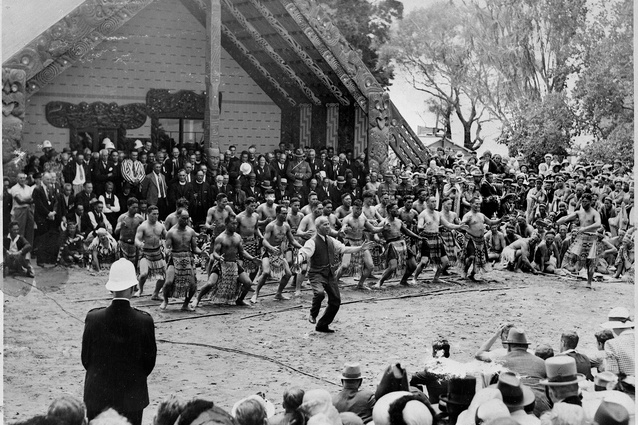
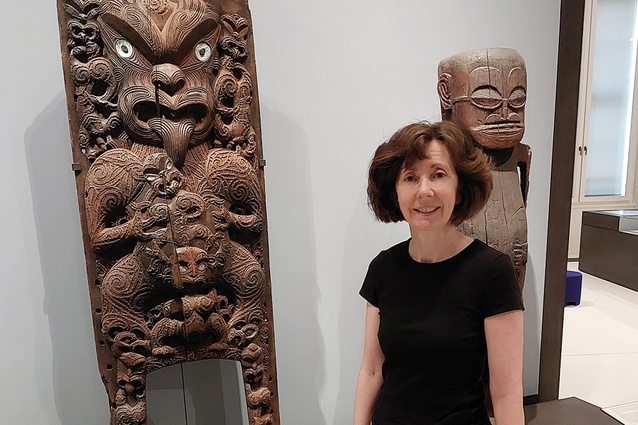
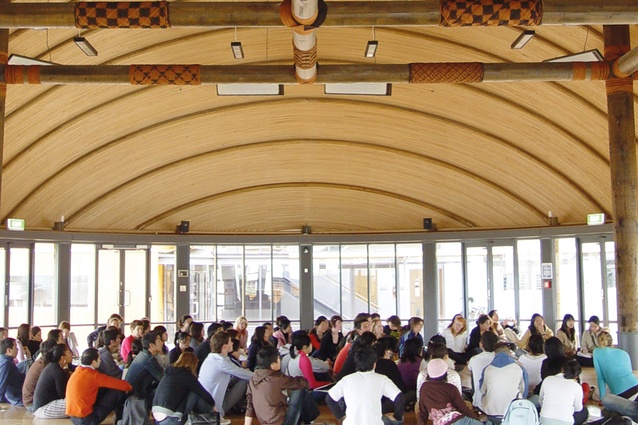
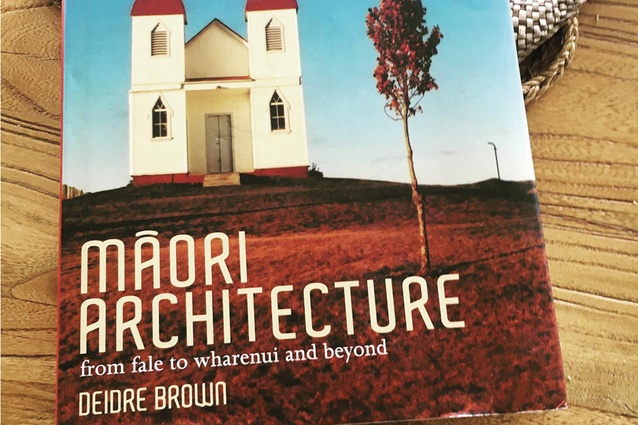
![Rewi Thompson (Ngāti Porou, Ngāti Raukawa), Aronui Trust Carvers, Whaiora Marae, ‘Fish Canopy’ (1987) [head], Ōtara Town Centre, Tāmaki Makaurau Auckland.](https://cdn.architecturenow.co.nz/site_media/media/cache/98/3c/983cbf178c52a33764580a7a2824b457.jpg)
